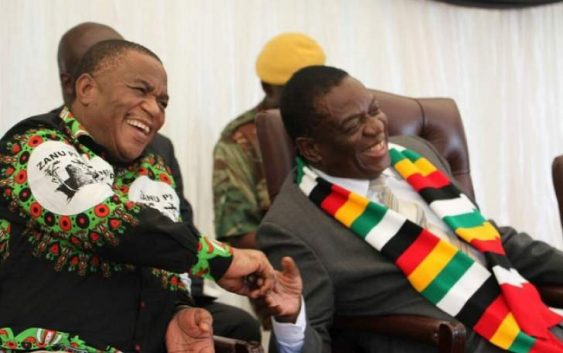- WICKNELL CHIVAYO left school at 15
- DISGRUNTLED Zimbabwe police stage uniform protest.
- MNANGAGWA wife Auxillia drops charges against nine women who boed her in Manicaland
- O.J. Simpson dies of cancer , aged 76.
- South Africa ANC is the cause of ZIMBABWE troubles claims Zimbabwe opposition politician Job Sikhala
ZIMBABWE national minerals reserve: mining companies minerals will now be required to cede a portion to the Government as part payment of royalties under a new policy to build a national reserve of valuable minerals.

ZIMBABWE national minerals reserve: mining companies minerals will now be required to cede a portion to the Government as part payment of royalties under a new policy to build a national reserve of valuable minerals.
The new policy, which comes into effect this month, will witness companies mining gold, diamonds, lithium and platinum group of minerals (PGMs) surrendering a quota of their minerals to the Reserve Bank of Zimbabwe (RBZ).
Writing in his weekly column for The Sunday Mail, President Mnangagwa said he had directed the Ministries of Finance and Economic Development and Mines and Mining Development to finalise drafting the enabling policy guidelines.
He said the RBZ will introduce a foolproof system to demand and collect minerals from the companies, including those processed outside the country.
The policy will be tailored to work in tandem with the Sovereign Wealth Fund “to secure and achieve inter-generational equity” added President Mnangagwa.
The national reserve of precious and high-value minerals will augment the country’s creditworthiness and help “circumvent and fend off funding limitations” caused by illegal sanctions imposed on the country.
“To that end, we have decided on this new policy which is dynamic, and which for a start targets four of our key minerals,” President Mnangagwa said.
“Two of them are precious; they are gold and diamonds.
“These must now be stockpiled both for prudence and inter-generational equity.
“The other two are high-value minerals, and these are lithium and platinum group of metals, PGMs.’
He said these strategic minerals are finite and, therefore, Government must act to ensure that they are shared “with those who come after us”.
“Hence, this policy we have just unveiled, which takes effect from this month of October 2022 onwards. I would have wanted this to start last month, in September; this could not happen since certain things needed finalising. Now we are ready.”
President Mnangagwa said companies exploiting other minerals will for the time being continue paying royalties in cash, which will go towards funding Government business.
In addition, President Mnangagwa said, the policy will be “flexible” and guided by geological scarcity and global demand for the minerals to determine the addition or removal of minerals in the national reserve bracket.
“I described the policy as dynamic. This is for two reasons.
“Firstly, to suggest that Government reserves the leeway to add or subtract minerals affected by this dual/split interpretation of mining royalties, as circumstances warrant.
“In doing so, Government will be guided both by national subsoil reserves of any one mineral, and by global demand there is, and by the value the mineral fetches on the global market.”
He said the new policy on mining royalties must “never be frozen in time”
In fact, he added, it must respond to scarcity and global demand trends.
No mineral exists or is extracted on its own. Most come with by-products.
“This is why we speak of the platinum group of minerals, PGMs.
“As I write, by-products from platinum mining, such as rhodium, palladium, silver, cobalt and gold, now account for 80 percent of mining revenues at today’s prices, with the flagship platinum only contributing a paltry 20 percent!
“Our policy should thus be flexible enough to respond to such changes and trends in the global metals market.”
He said the policy will also boost the minting and selling of gold coins locally due to an increase in gold stocks.
To date, the RBZ has sold over 10 000 gold coins, for about US$15 million.
The Central Bank is set to introduce smaller denomination gold coins next month on account of massive appetite for them.
The Mosi-oa-Tunya, President Mnangagwa said, have helped stabilise the local currency which is now close to convergence with black market exchange rates.
“Our target is releasing US$30 million worth of coins,” he said.
“By mid-November this year, the RBZ should be in a position to unveil smaller denominations of gold coins, whose value will range from a tenth, a quarter, to half of an ounce.
“This allows more Zimbabweans to participate, including those in lower income bands.
“That way, we buouy our currency, while stimulating national savings.”
Following introduction of the Mosi-oa-Tunya, authorities have witnessed “US dollars, all along stashed, circulating more and more in the formal market,” adding that the coins’ impact has been positive.
“The impact has been positive, including a gradual convergence of different exchange rates in the economy.
“All these are very auspicious signs towards the stabilisation of our economy.”
Source – The Sunday Mail